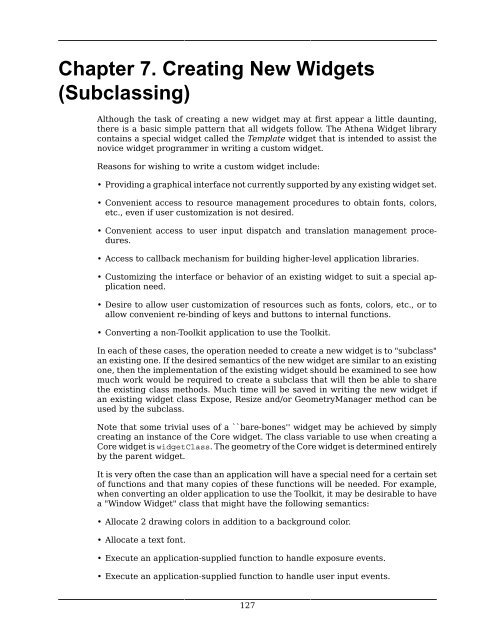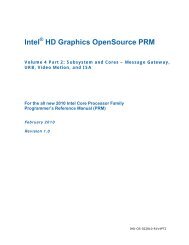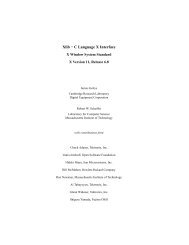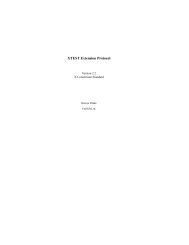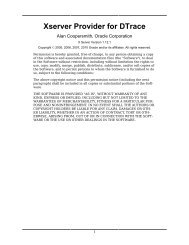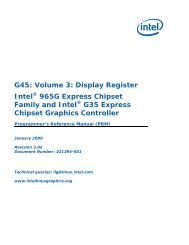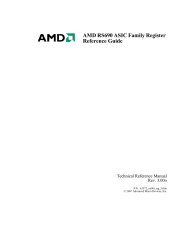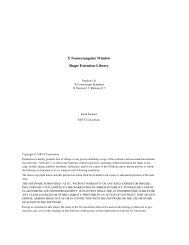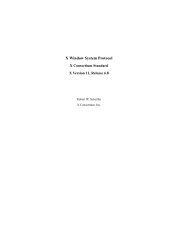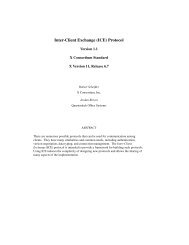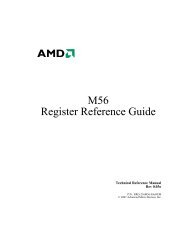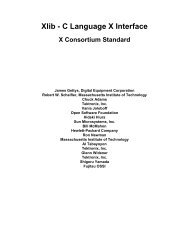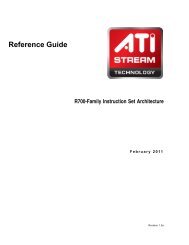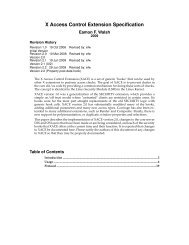Athena Widget Set - C Language Interface - X Consortium ... - X.Org
Athena Widget Set - C Language Interface - X Consortium ... - X.Org
Athena Widget Set - C Language Interface - X Consortium ... - X.Org
You also want an ePaper? Increase the reach of your titles
YUMPU automatically turns print PDFs into web optimized ePapers that Google loves.
Chapter 7. Creating New <strong>Widget</strong>s(Subclassing)Although the task of creating a new widget may at first appear a little daunting,there is a basic simple pattern that all widgets follow. The <strong>Athena</strong> <strong>Widget</strong> librarycontains a special widget called the Template widget that is intended to assist thenovice widget programmer in writing a custom widget.Reasons for wishing to write a custom widget include:• Providing a graphical interface not currently supported by any existing widget set.• Convenient access to resource management procedures to obtain fonts, colors,etc., even if user customization is not desired.• Convenient access to user input dispatch and translation management procedures.• Access to callback mechanism for building higher-level application libraries.• Customizing the interface or behavior of an existing widget to suit a special applicationneed.• Desire to allow user customization of resources such as fonts, colors, etc., or toallow convenient re-binding of keys and buttons to internal functions.• Converting a non-Toolkit application to use the Toolkit.In each of these cases, the operation needed to create a new widget is to "subclass"an existing one. If the desired semantics of the new widget are similar to an existingone, then the implementation of the existing widget should be examined to see howmuch work would be required to create a subclass that will then be able to sharethe existing class methods. Much time will be saved in writing the new widget ifan existing widget class Expose, Resize and/or GeometryManager method can beused by the subclass.Note that some trivial uses of a ``bare-bones'' widget may be achieved by simplycreating an instance of the Core widget. The class variable to use when creating aCore widget is widgetClass. The geometry of the Core widget is determined entirelyby the parent widget.It is very often the case than an application will have a special need for a certain setof functions and that many copies of these functions will be needed. For example,when converting an older application to use the Toolkit, it may be desirable to havea "Window <strong>Widget</strong>" class that might have the following semantics:• Allocate 2 drawing colors in addition to a background color.• Allocate a text font.• Execute an application-supplied function to handle exposure events.• Execute an application-supplied function to handle user input events.127


